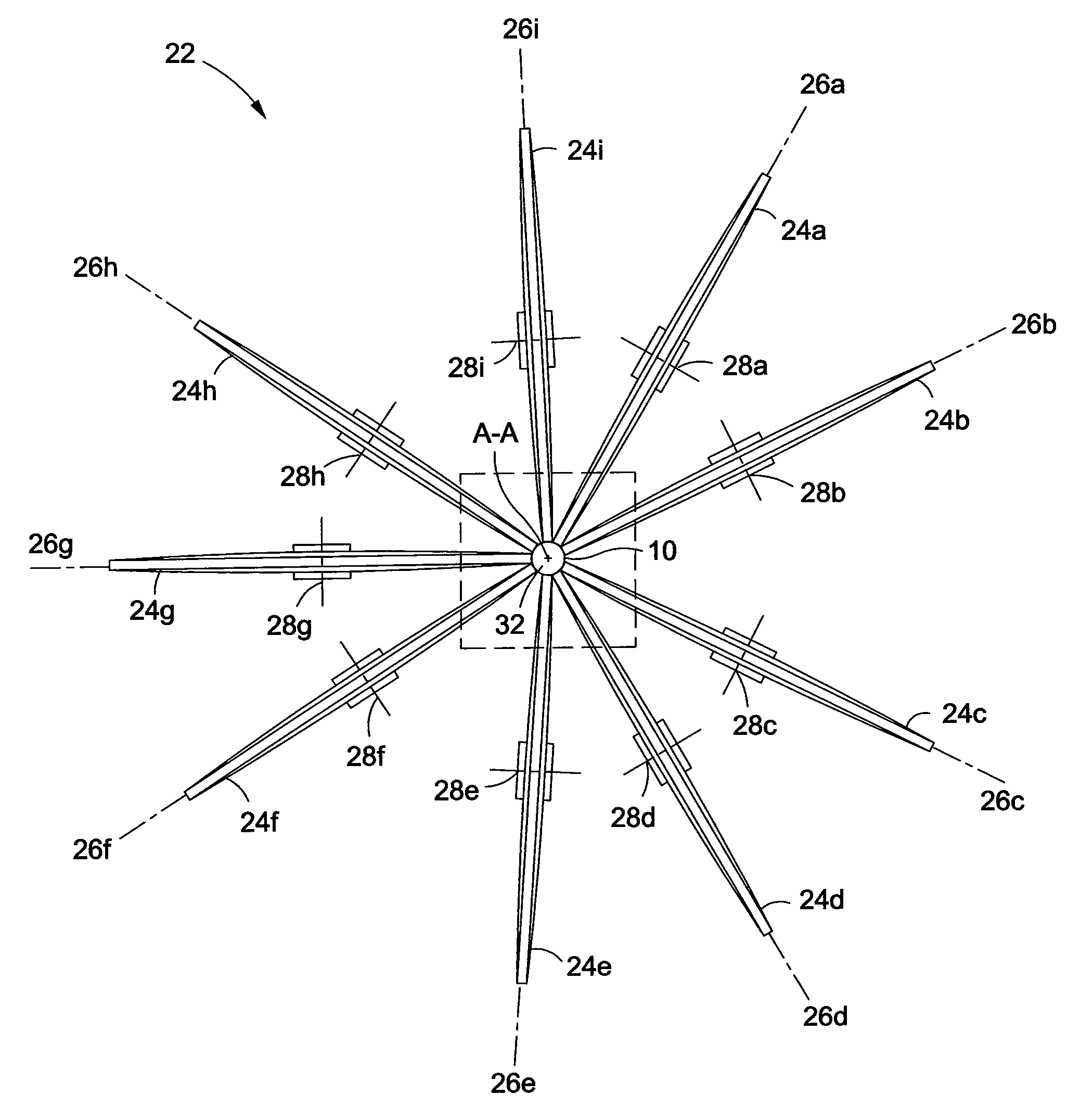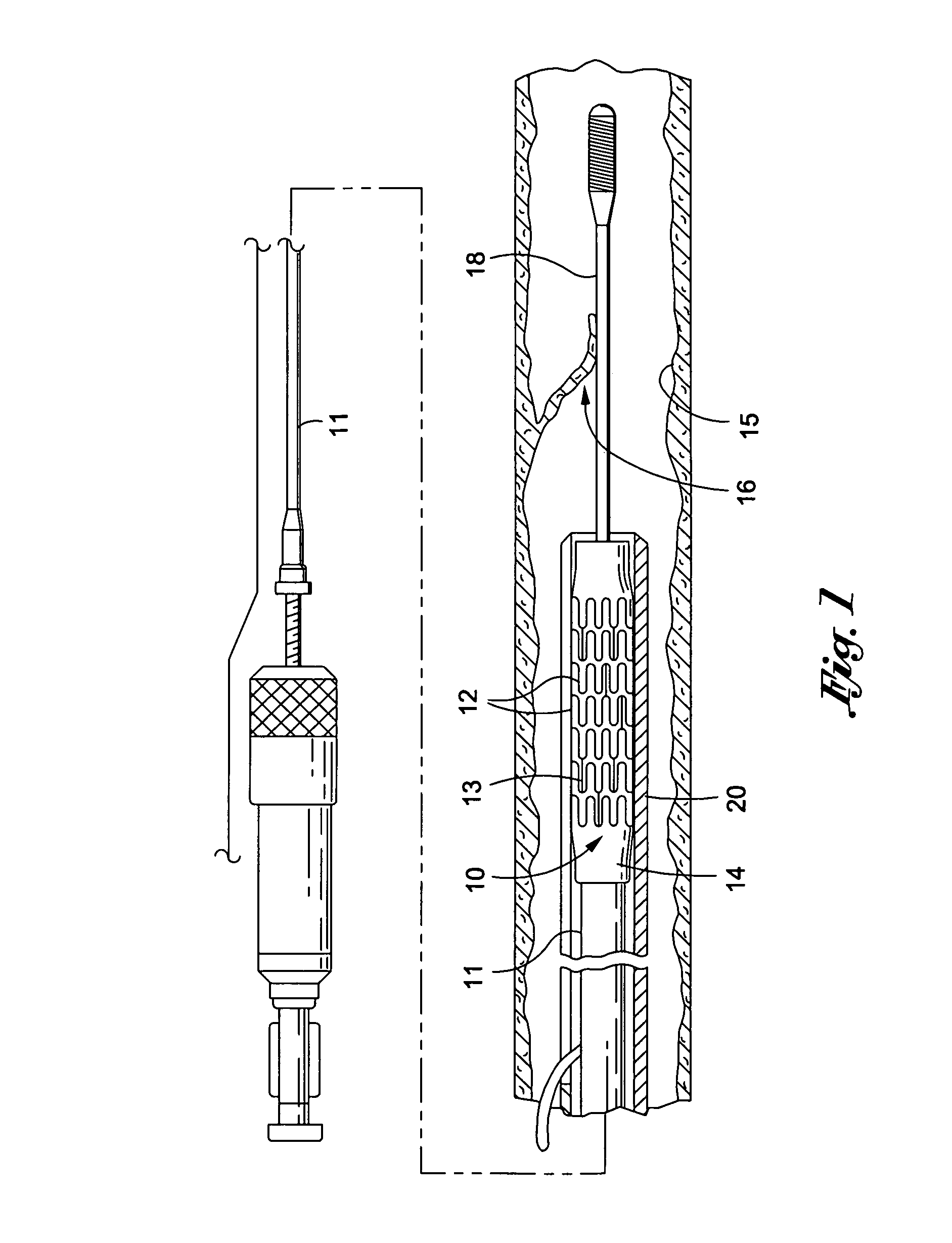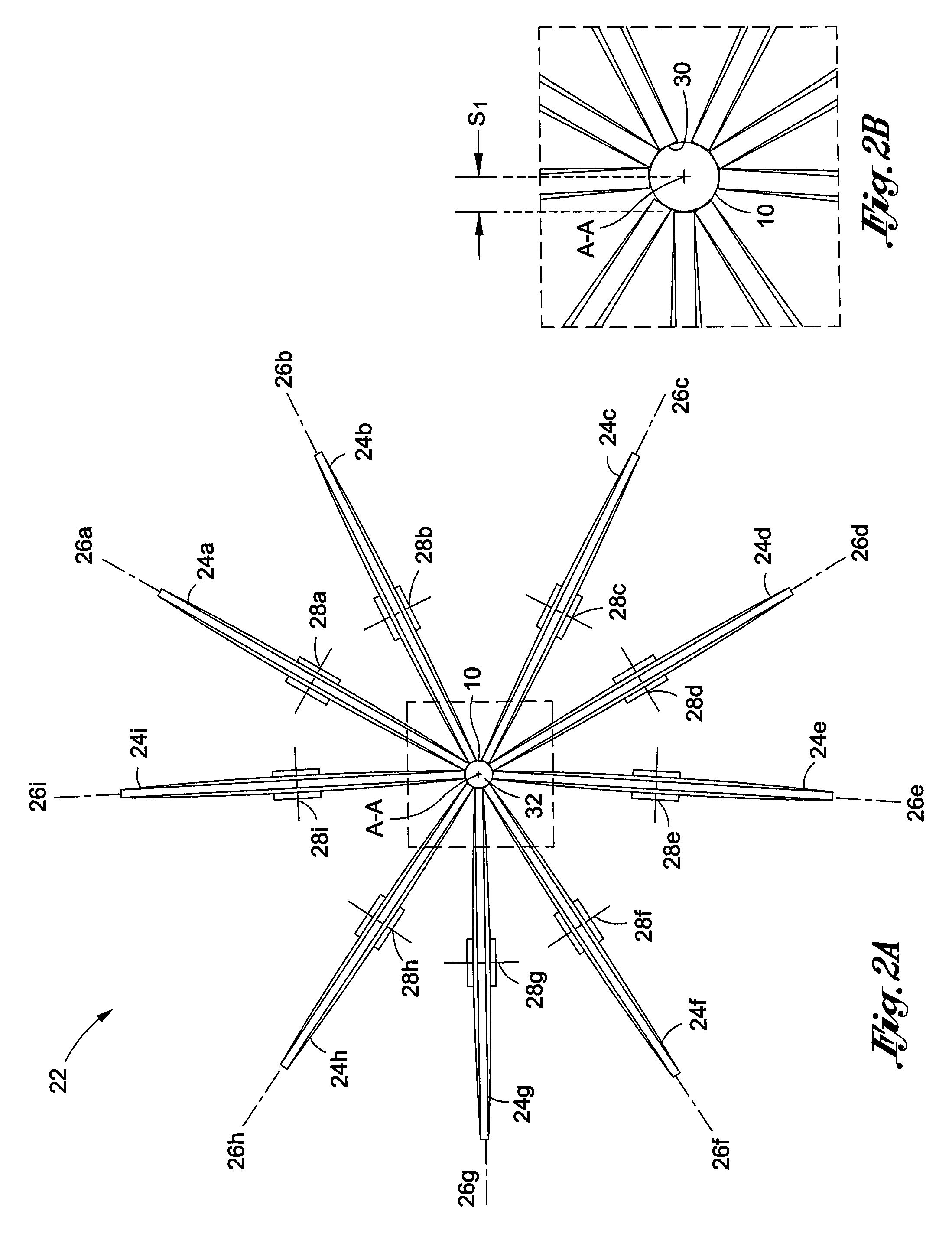Stent crimping device
a crimping device and stent technology, applied in the direction of metal-working holders, large fixed members, supporters, etc., can solve the problems of obstructing arteries, non-uniform stent crimping, and stent occlusion, etc., to achieve high usefulness, perform fairly efficiently and quickly
- Summary
- Abstract
- Description
- Claims
- Application Information
AI Technical Summary
Benefits of technology
Problems solved by technology
Method used
Image
Examples
Embodiment Construction
[0031]With reference to FIGS. 2-9, there is shown by way of exemplification and not limitation a prosthesis or stent crimping device having features of the present invention, generally indicated by the numeral 22.
[0032]Before the invention is described, several aspects of related technology and human anatomy are described with reference to FIG. 1, which illustrates an intravascular stent 10 which is mounted onto a delivery catheter 11. The stent 10 generally comprises a plurality of radially expandable cylindrical elements 12 disposed generally coaxially and interconnected by members 13 disposed between adjacent cylindrical elements 12. Delivery catheter 11 has an expandable portion or balloon 14 for expanding stent 10 within coronary artery 15 or other vessel such as saphenous veins, carotid arteries, arteries, and veins. Artery 15, as shown in FIG. 1, has a dissected lining 16 which has occluded a portion of the arterial passageway.
[0033]The delivery catheter 11 onto which the ste...
PUM
| Property | Measurement | Unit |
|---|---|---|
| diameter | aaaaa | aaaaa |
| distance | aaaaa | aaaaa |
| pressures | aaaaa | aaaaa |
Abstract
Description
Claims
Application Information
 Login to View More
Login to View More - R&D
- Intellectual Property
- Life Sciences
- Materials
- Tech Scout
- Unparalleled Data Quality
- Higher Quality Content
- 60% Fewer Hallucinations
Browse by: Latest US Patents, China's latest patents, Technical Efficacy Thesaurus, Application Domain, Technology Topic, Popular Technical Reports.
© 2025 PatSnap. All rights reserved.Legal|Privacy policy|Modern Slavery Act Transparency Statement|Sitemap|About US| Contact US: help@patsnap.com



